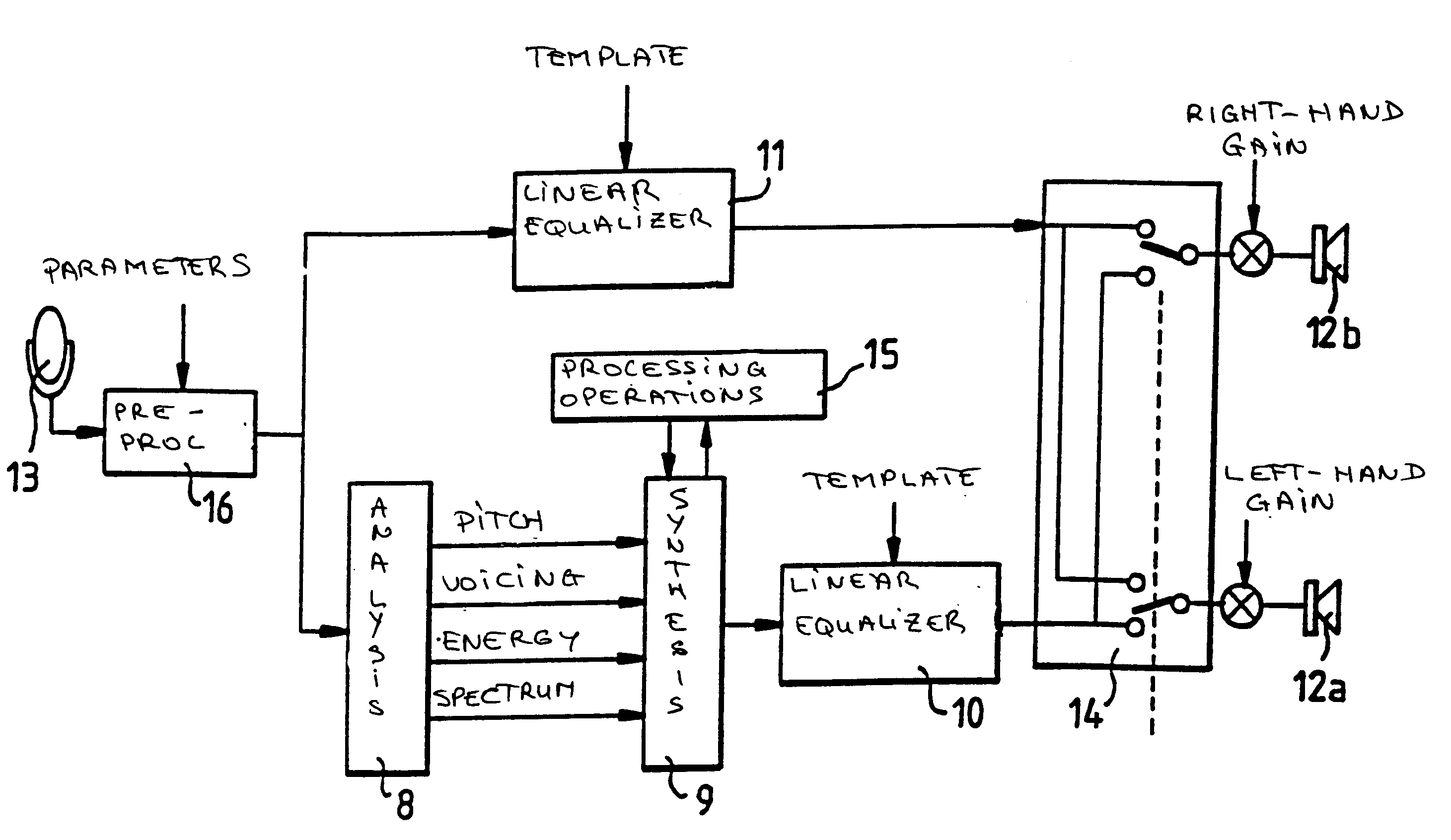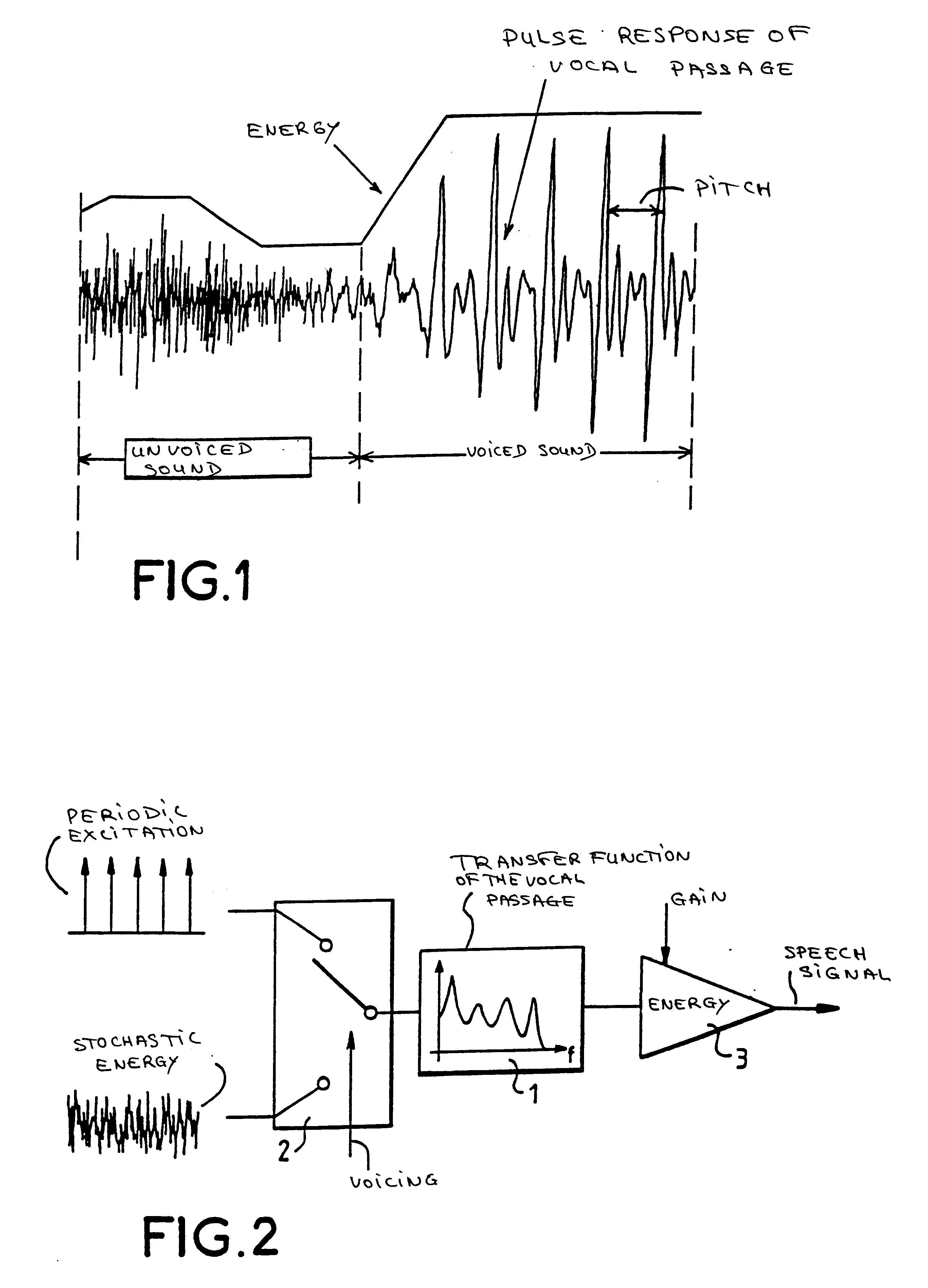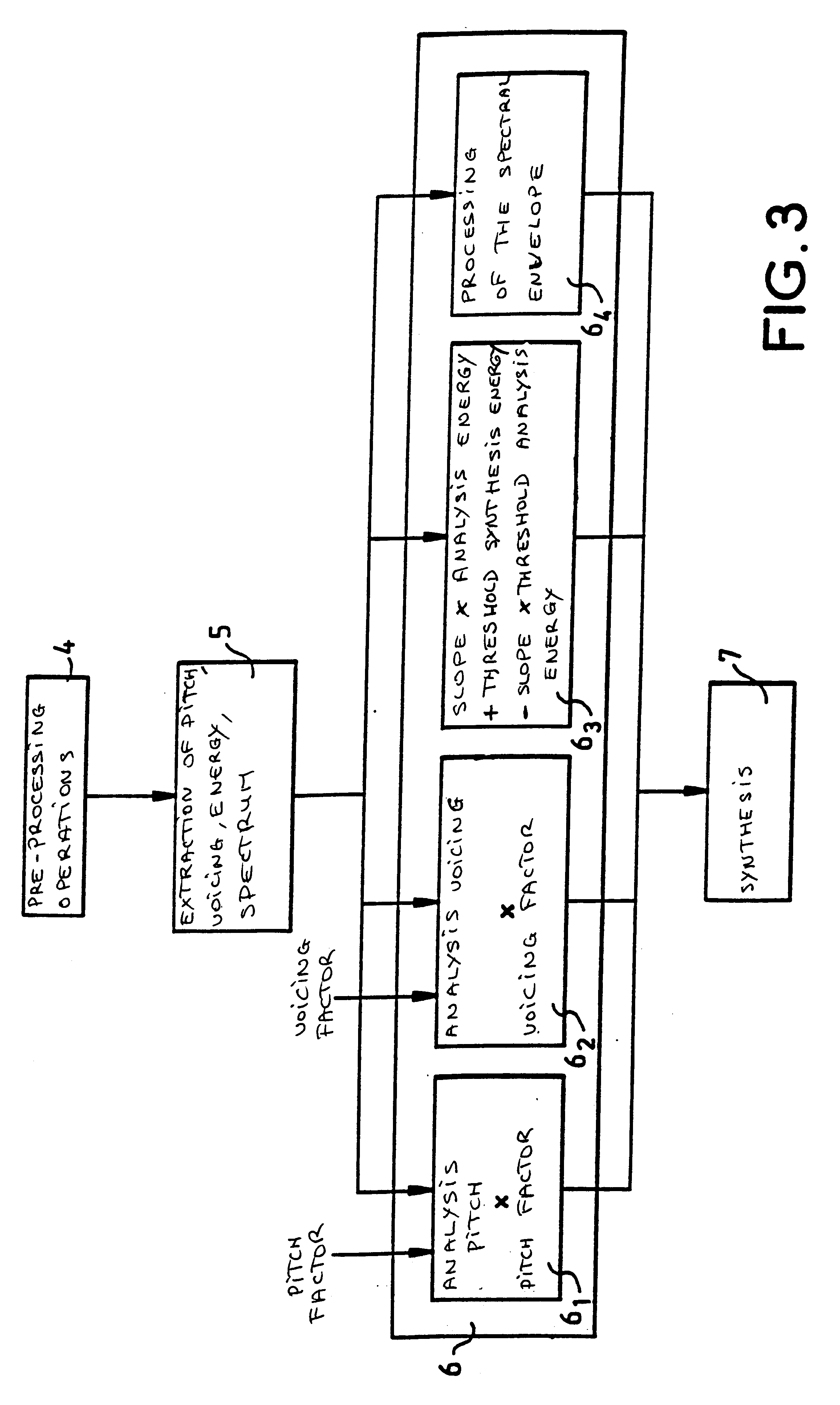Method and device for the processing of sounds for auditory correction for hearing impaired individuals
a technology for hearing impaired individuals and processing devices, applied in the field of hearing impaired individual processing devices, can solve the problems of pain, inability to provide very approximation levels of auditory correction, and inability to adequately provide appropriate technical aids for people presently without appropriate technology,
- Summary
- Abstract
- Description
- Claims
- Application Information
AI Technical Summary
Benefits of technology
Problems solved by technology
Method used
Image
Examples
Embodiment Construction
The method for the processing of speech signals according to the invention is based on a parametrical modelling of the speech signal of the type commonly implemented in the techniques for making HSX digital vocoders, as described in the article by P. Gournay, F. Chartier, "A 1200 bits / s HSX speech coder for very low bit rate communications", published in the IEEE Proceedings Workshop on Signal Processing System (Sips'98), Boston, Oct. 8-1998.
This model is defined chiefly by four parameters shown in FIG. 1:
a voicing parameter that describes the varyingly periodic character of the voice sounds or random character of the unvoiced sounds of the speech signal,
a parameter defining the fundamental frequency or "PITCH" of the voiced sounds,
a parameter representing the temporal progress of the energy,
and a parameter representing the spectral envelope of the speech signal.
The spectral envelope of the signal or "spectrum" may be obtained by a self-regressive modelling using a linear prediction...
PUM
 Login to View More
Login to View More Abstract
Description
Claims
Application Information
 Login to View More
Login to View More - R&D
- Intellectual Property
- Life Sciences
- Materials
- Tech Scout
- Unparalleled Data Quality
- Higher Quality Content
- 60% Fewer Hallucinations
Browse by: Latest US Patents, China's latest patents, Technical Efficacy Thesaurus, Application Domain, Technology Topic, Popular Technical Reports.
© 2025 PatSnap. All rights reserved.Legal|Privacy policy|Modern Slavery Act Transparency Statement|Sitemap|About US| Contact US: help@patsnap.com



